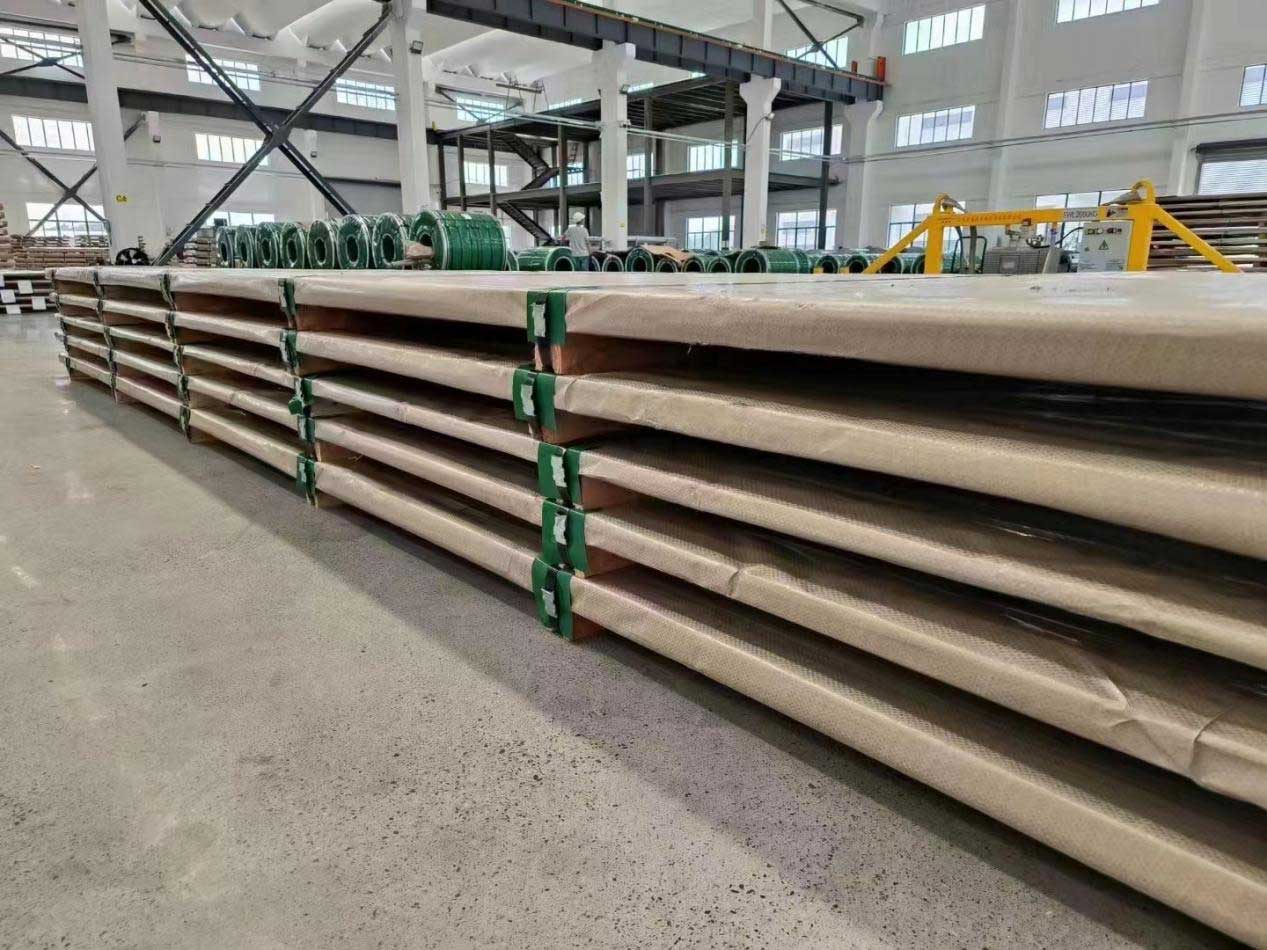Advantages and characteristics of stainless steel plates
The stainless steel plate has a smooth surface, high plasticity, toughness and mechanical strength, and is resistant to corrosion by acids, alkaline gases, solutions and other media. It is an alloy steel that is not easy to rust, but it is not absolutely rust-free.The standard is mostly ASTMA240.
performance
Corrosion resistance
Stainless steel plates have a similar ability to resist general corrosion as unstable nickel-chromium alloy 304. Prolonged heating in the temperature range of chromium carbide levels may affect alloys 321 and 347 in harsh corrosive media. Mainly used for high temperature applications, which require materials with strong resistance to sensitization to prevent intergranular corrosion at lower temperatures.
High temperature oxidation resistance
Stainless steel plates all have high-temperature oxidation resistance, but the oxidation rate will be affected by inherent factors such as exposure environment and product form.
Physical properties
The overall heat transfer coefficient of a metal depends on other factors in addition to the thermal conductivity of the metal. In most cases, the heat dissipation coefficient of the film, rust scale and surface condition of the metal. Stainless steel keeps its surface tidy, so it conducts heat better than other metals with higher thermal conductivities. Liaocheng Suntory Stainless Steel provides 8. Technical standards for stainless steel plates: High-strength stainless steel plates with excellent corrosion resistance, bending performance and toughness of welded parts, as well as stamping performance of welded parts and their manufacturing methods. Specifically, it contains C: 0.02% or less, N: 0.02% or less, Cr: 11% or more and less than 17%, appropriate content of Si, Mn, P, S, Al, Ni, and satisfies 12≤Cr Mo 1.5Si≤ 17. 1≤Ni 30(C N) 0.5(Mn Cu)≤4, Cr 0.5(Ni Cu) 3.3Mo≥16.0, 0.006≤C N≤0.030 stainless steel plate is heated to 850~1250℃, and then heated at 1℃/s The cooling rate is above the cooling heat treatment. In this way, it can become a high-strength stainless steel plate with a structure containing more than 12% martensite by volume, high strength of more than 730MPa, corrosion resistance and bending performance, and excellent toughness in the welding heat-affected zone. Reusing materials containing Mo, B, etc. can significantly improve the stamping performance of the welded parts.
The flame of oxygen plus gas cannot cut stainless steel plates because stainless steel is not easily oxidized.
 JIMI STEEL MILL LIMITED
JIMI STEEL MILL LIMITED


